India has been lagging behind advanced countries, including China, in developing appropriate technologies for steel-making and raw materials processing due to very low expenditure on R&D activities.

Less than 0.5 percent of the total turnover is invested in such areas as against 1-2 percent by advanced mills. It is also observed, there is not adequate impetus for private entrepreneurs to go in for foreign technology transfer or for establishing manufacturing hubs within the country with the help of technology owners for whom the necessary drawings and designs are in excess supply due to shrinking growth of the steel industry in many advanced countries. It is, therefore, imperative that the major steel plants in India invest adequately in developing technologies for steel- and iron-making, Sushim Banerjee, Director General of the Institute for Steel Development & Growth (INSDAG), tells Tamajit Pain
What is the present R&D scenario like in Indian steel-making? Which areas are being focused on?
The genesis of the Indian steel industry after the Second World War revolved around public sector steel plants like Bhilai, Rourkela, Durgapur and Bokaro, At the time of Independence, two integrated steel producing units were operating, one at Jamshedpur and the other at Burnpur. The public sector steel plants at Bhilai and Bokaro adopted the Russian technology of steel-making while the Austrian LD technology and British technology were adopted at Rourkela and Durgapur. The major private sector steel plants like Essar Steel, JSW Steel and JSPL borrowed foreign technology (Japanese and German) for steelmaking. The Research and Development Centre at Steel Authority of India Limited (SAIL) and Tata Steel have been doing intensive research not on basic technology of steel making but have concentrated on improvements in rolling technology and other quality upgradation areas.
Esta historia es de la edición September 2018 de Steel Insights.
Comience su prueba gratuita de Magzter GOLD de 7 días para acceder a miles de historias premium seleccionadas y a más de 9,000 revistas y periódicos.
Ya eres suscriptor ? Conectar
Esta historia es de la edición September 2018 de Steel Insights.
Comience su prueba gratuita de Magzter GOLD de 7 días para acceder a miles de historias premium seleccionadas y a más de 9,000 revistas y periódicos.
Ya eres suscriptor? Conectar

Steel's Net Zero mission
The country’s commitment to achieving Net Zero within a targeted timeframe will now propel its steel sector towards a sustainable future in line with global trends.
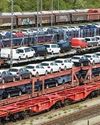
Fuel Price Hike, Supply Chain Disruption Hurt Festive Sales
Supply chain disruptions and fuel price hikes have hurt festive sales in a big way as most auto majors posted decline in sales in October.

Seaborne coking coal offers remain range-bound
Seaborne coking coal offers moved in a narrow range in October amid global supply tightness and healthy spot demand.
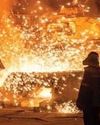
Global crude steel output down 8% in September
China manufactured 74 mt in September, fall of 21% y-o-y while India’s production went up by 7% to 10 mt.
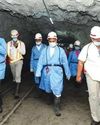
MOIL embarks on expansion projects
“Even though our country is blessed with manganese ore reserves, we import 50% of the domestic requirement. We have to lower our import dependence and save precious foreign exchange.” Ram Chandra Prasad Singh, Steel Minister

Iron ore handled by major ports down 17% in H1
The 12 major Indian ports handled 27 mt of iron-ore during H1 of 2021, down by 17% from 33 mt recorded for the corresponding period of previous year.
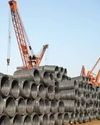
Shrinking China output to boost India exports
“In the third quarter of 2021, the company actively responded to the pressure from external policies, such as production curtailment and dual control system on energy consumption and intensity, as well as coal resource shortage and surging prices.” Baoshan Iron and Steel Co Ltd
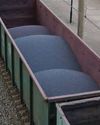
Indian Railways' iron-ore handling up 25% in H1
Indian Railways in April-September of 2021 (H1) transported 84 mt of iron ore, up by 25% over 67 mt during April-September 2020.
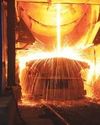
September crude steel production up 7.2% y-o-y
India’s crude steel production in September 2021 grew 7.2 percent to 9.547 million tons (mt) over September 2020 but was down by 3.2 percent from August 2021 output, provisional steel ministry data showed.

“Five enablers: way forward to sustainable cleaner steel”
Right and scalable technology, appropriate policy guidance by government, access to finance to fund transition, willingness of customers to pay for cleaner products and infrastructure for use of new technologies are the need of the hour for the sustainable and cleaner steel industry, according to Madhulika Sharma, Chief Corporate Sustainability, Tata Steel.